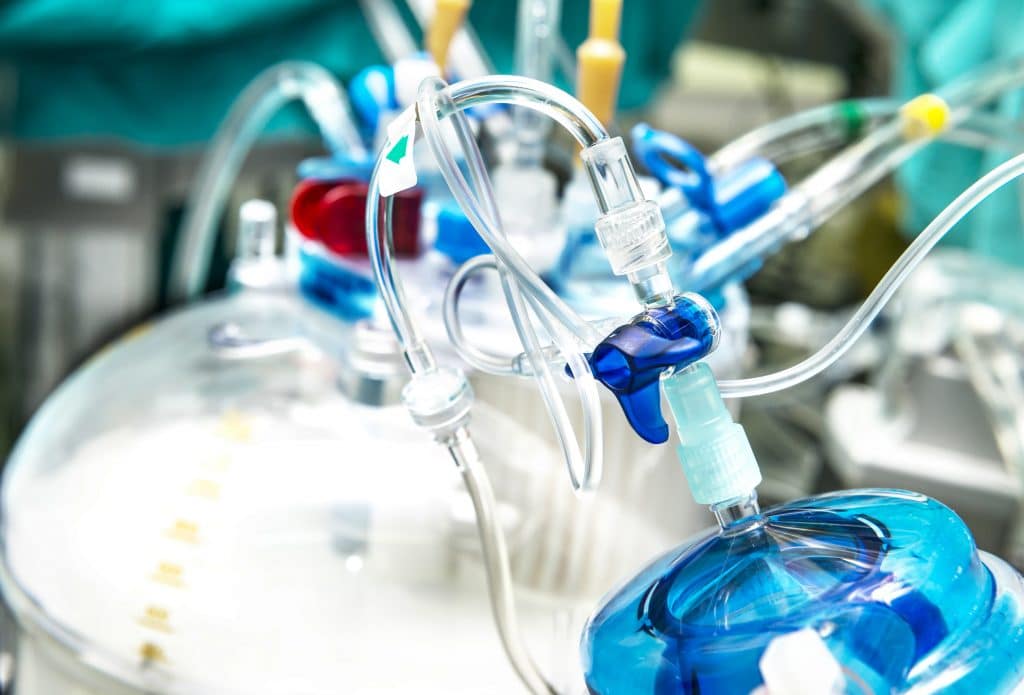A Pharmacokinetic and Pharmacodynamic Investigation of an ε-Aminocaproic Acid Regimen Designed for Cardiac Surgery with Cardiopulmonary Bypass

Objective
To investigate the pharmacokinetics and pharmacodynamics of an ε-aminocaproic acid (EACA) regimen designed for cardiac surgery with cardiopulmonary bypass (CPB).
Design
Prospective observational study requiring blood sampling to measure EACA concentrations and fibrinolysis markers (fibrinogen, D-dimer, α2-antiplasmin, and tissue plasminogen activator-plasminogen activator inhibitor [tPA-PAI-1] complex).
Participants
Patients who underwent cardiac surgery with CPB between 2018 and 2019 for aortic or mitral valve replacement/repair or coronary artery bypass grafting. Previous sternotomy patients were included.
Measurements and Main Results
The pharmacokinetics of EACA, during CPB, were described by a 3-compartment disposition model. EACA concentrations were greater than 130 mg/L in all patients after CPB and in most patients during CPB. The D-dimer level trended up and reached a peak median level of 1.35 mg/L of fibrinogen equivalence units (FEU) at 15 minutes after protamine administration. The median change in D-dimer (ΔD-dimer) from baseline to 15 minutes after protamine was 0.34 (–0.48 to 3.81) mg/L FEU. ΔD-dimer did not correlate with EACA concentration intraoperatively, urine output, body weight, glomerular filtration rate, cell salvage volume, and ultrafiltration volume. The median 24-hour chest tube output was 445 (180-1,011) mL.
Conclusion
This regimen provided maximum EACA concentrations near the time of protamine administration, with a total perioperative dose of 15 g. Most patients had EACA concentrations greater than the target during CPB. ΔD-dimer did not correlate with EACA concentration. The median 24-hour chest tube output compared well to similar studies that used higher doses of EACA.
